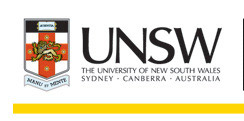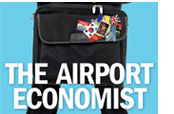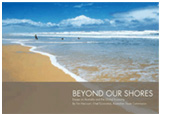Taking it Yuan step at a time – do we need an FTA with China?
By Tim Harcourt*
The Prime Minister’s visit to China is of immense importance to her personal standing foreign policy and to the future of Australia’s economic relationship with the Middle Kingdom. China’s relationship with Australia as export destination, import source, and trading partner has grown in leaps and bounds and despite the occasional PR skirmish, the investment relationship is pretty healthy too.
The show case of this official visit was the announcement of convertibility of Australian dollars into the Chinese Yuan (or reminbi). This is good news for Australian exporters – especially small and medium sized enterprises (SMEs) – who don’t have the large capacity to hedge on currency like Rio Tinto or Woodside do.
This is not an insignificant number of companies now. According to new ABS data, nearly 5300 Australian companies export goods to China with another 5024 selling to Hong Kong (mainly as a base for the Chinese market). This now dwarfs most European destinations and even North East Asian Giants Japan on 2773 and Korea on 2187, and when you add the 3000 plus Australian companies with an office in China, the Prime Minister’s announcement is a welcome one.
According to Sensis, more exporting SMEs export to China (and ASEAN) than to Europe so the Chinese market is a big deal. Much will depend on the Chinese financial services sector to develop – and Australian companies like ANZ, Macquarie and AMP are helping in this regard – but the convertibility move is a good first step on the long march to seamless economic ties between Australia and China.
The other main issue of the visit (apart from geo-political issues like North Korea) has been the potential free trade agreement (FTAs) with China that has been in negotiation phase for nearly a decade.
Whilst FTAs with China incite passions in places like USA, Canada and South Korea, in Australia the response has been relatively benign. In fact, when the DHL Barometer first surveyed Australian exporters about FTAs, most wanted an agreement with China than they did with the USA or Thailand – despite our historical and defence ties with Washington DC that we have never had with Beijing (or Bangkok for that matter).
According to the survey 45 per cent thought a FTA with China would be positive, 45 per cent neutral and only 10 percent negative. This compared to a 25 per cent positive rating for the USA, and 21 per cent for Thailand.
There was some opposition from manufacturers (although of AiG members the exporters were quite positive relative to import competing manufacturing businesses), some mixed views on market access from the agricultural sector but an overwhelmingly positive response from resources, education, tourism and professional services.
The view from China was primarily positive except for concerns about the impact of open access on agricultural products on poor regions, although leading agricultural representatives have noted that Australian and Chinese agricultural interests are largely complementary.
Do we need a FTA at all? Key investments in both countries will still take place with or without a FTA, but it does provide a framework for streamlining the multiplicity of issues that impact Australia’s ties with a complex economy like China’s.
A FTA would certainly show again how important Australia has been as a friend of China’s a key moments, with the recognition by Gough Whitlam in 1972, support for China’s entry in the WTO, and the support given to China by Australia at a multilateral level, despite more aggressive anti-China stances by our allies.
For China, keen to lock in resource and food security to guarantee growth and prosperity for a majority of its 1.3 billion population a FTA with Australia would be a desirable economic objective.
What if China slows? There are signs of credit adjustment in the housing market, and a tight labour market in China, and Beijing’s stance on the currency shows a caution about the social effects of wage-price inflation in a tight labour market.
But most of the warning signs of a slowing Chinese economy have not come just from foreign economists, but also from the Chinese authorities themselves. China knows it has to manage an adjustment to a slower growth economy with more focus on domestic savings and investment than exports and to do so it needs Australia’s help.
Accordingly, the Prime Minister’s conversion offer, and overall framework for the bilateral relationship, still puts Australian in the right place at the right time.
*Tim Harcourt is the JW Nevile Fellow in Economics, Australian School of Business, UNSW and author of The Airport Economist www.timharcourt.com
The Mandarin Chinese version of The Airport Economist will be launched in Beijing on April 23rd.












